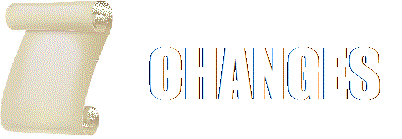
First you will choose your country, and the starting date for your game. While you can set the game to begin on any date between November 11, 1444 and December 31, 1820, several particularly interesting dates have been bookmarked for you, each representing a particularly challenging and important turning point in history, from the Rise of the Ottoman Empire to the Napoleonic Wars. Countries playing a central role in these turning points are highlighted for each year by having their shields emblazoned across the bottom of the map.
The synopsis in the lower portion of the screen describes the events surrounding these bookmarked years.
Again, you are not tied to these specific starting dates. You are free to jump into the History of the World at any point in the timeframe of the game – just adjust the starting date however you wish and watch as the world map shifts to accommodate your selection. Once you have picked your starting date, you can scroll across the map, using the mouse wheel to zoom in or out, and select the nation you wish to control by clicking on the map.
Tucked behind Historical Start, you will notice a tab labeled Save Games where all your saved games can be found.
To aid you in making your choice, there are several different map views which can help you find the precise situation you would like to encounter in your game: from a rising trading empire spanning all the major routes to the Orient, to a Prince of the Holy Roman Empire, jockeying for the throne. After you’ve decided on a country, these views can also help you gain a greater understanding of your position in the world as you enter the game.
These map views, clickable under the current year banner are:
- Terrain Map – the default map which shows
the landscape terrain of the game world and all the national borders.
- Political Map – this map features the different nations, each in their own color, to clearly
distinguish their territories.
- Religious Map– this map highlights the religious divisions of the world. As you zoom in, national borders also become distinct.
- Imperial Map– this map highlights the possessions of the Holy Roman Empire, and highlights
the Imperial Electors and the current Emperor.
- Trade Map– this map features trade nodes and
the lands they pertain to, though national borders are also visible. Zoom in to see trade routes crisscrossing the continents and seas.
- Diplomatic Map– this map clearly shows national borders, but when you click on a country
you will see at a glance their territories, vassals, friends, allies and enemies.
As you are clicking through the countries, pay close attention to the information bar on the right. It provides much useful information about each country you might select.
For example, in the information bar on the right, the crucifix emblem indicates that Burgundy is Catholic. If you hover over the cross, a tool tip will appear which explains this. We also know, from the Tricorn hat over the cog wheel, that Burgundy is a proud and fortunate member of the Western Technology Group, the most advanced technology group in the game.
We also see that Burgundy is a Kingdom and an Independent Nation, meaning that the Burgundians aren’t vassals of another country. How unfortunate for France...
We can see the current ruler as well as his skills in Administration, Diplomacy, and Military matters, and below that we can consider Burgundy’s current technology levels: a 16 in Administration, a 14 in Diplomacy, and a 17 in Military.
We can also see that Burgundy has nineteen Ideas, and after hovering over the light bulb icon with the mouse, we quickly learn that Burgundy has acquired six of the Burgundian National Ideas, which can be used to purchase many other ideas. Seven Defensive Ideas have also already been acquired, making a complete set, as well as all seven of the Trade ideas. Four more ideas in the Administrative Idea group have been acquired, plus one more idea from the Exploration Idea group. We can also see Burgundy’s starting National Idea, and the bonuses which will be gained once all seven Burgundian National Ideas are acquired.
Burgundy’s National Ideas are laid out in a convenient row. Hover over each of them and a tooltip will appear which explains each one in detail. Beneath that, there is a slider which grades Burgundy’s difficulty between easy (the pacifier on the left) and difficult (the skull and bones on the right). Apparently, Burgundy promises to be a challenge to play: the nation faces tough times ahead. We can also see that the Diplomacy of the country is fair, the Economy is poor, and the Military – well, it leaves much to be desired.
If you scroll all the way down on that Diplomacy slider, you would learn that Burgundy is at war with Auvergne (and tied), the Palatinate (and losing), and also France (who is crushing Burgundy rather badly). This would explain the unfortunate state of the Military. We also learn that Burgundy has peace treaties in effect with Sweden, Denmark, Norway, Great Britain, Hungary, the Livonian Order, Bavaria, Mainz, Saxony, and Saxe-Lauenberg. You can hover over each for a tooltip showing the expiration of each truce. It would seem that Burgundy has been engaging in quite a bit of shenanigans of late.
A little further down we can see that Etruria is working hard to boost Burgundy’s opinion of them. We also learn that Brandenburg is Burgundy’s only ally, and the two share a Royal Marriage as well. Austria, it would seem, is heading an Anti-Burgundy Coalition. We also note that upwards twelve nations rebuffed Burgundy’s recent calls to action, which quickly shifted each of their relations from ally to enemy. Also notable, Flanders has granted military access to Burgundy’s troops. Finally we learn that Burgundy is in the process of Fabricating a Claim on Ilede-France and that they have a National Mission to vassalise Lorraine. As you can see, this is quite a lot of information packed into a single side bar!






